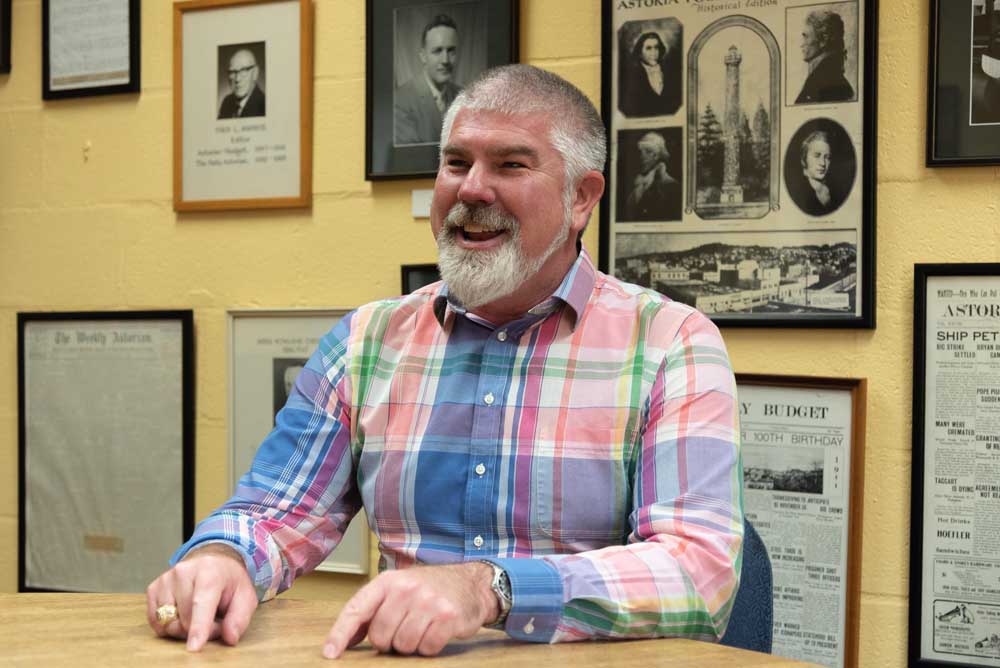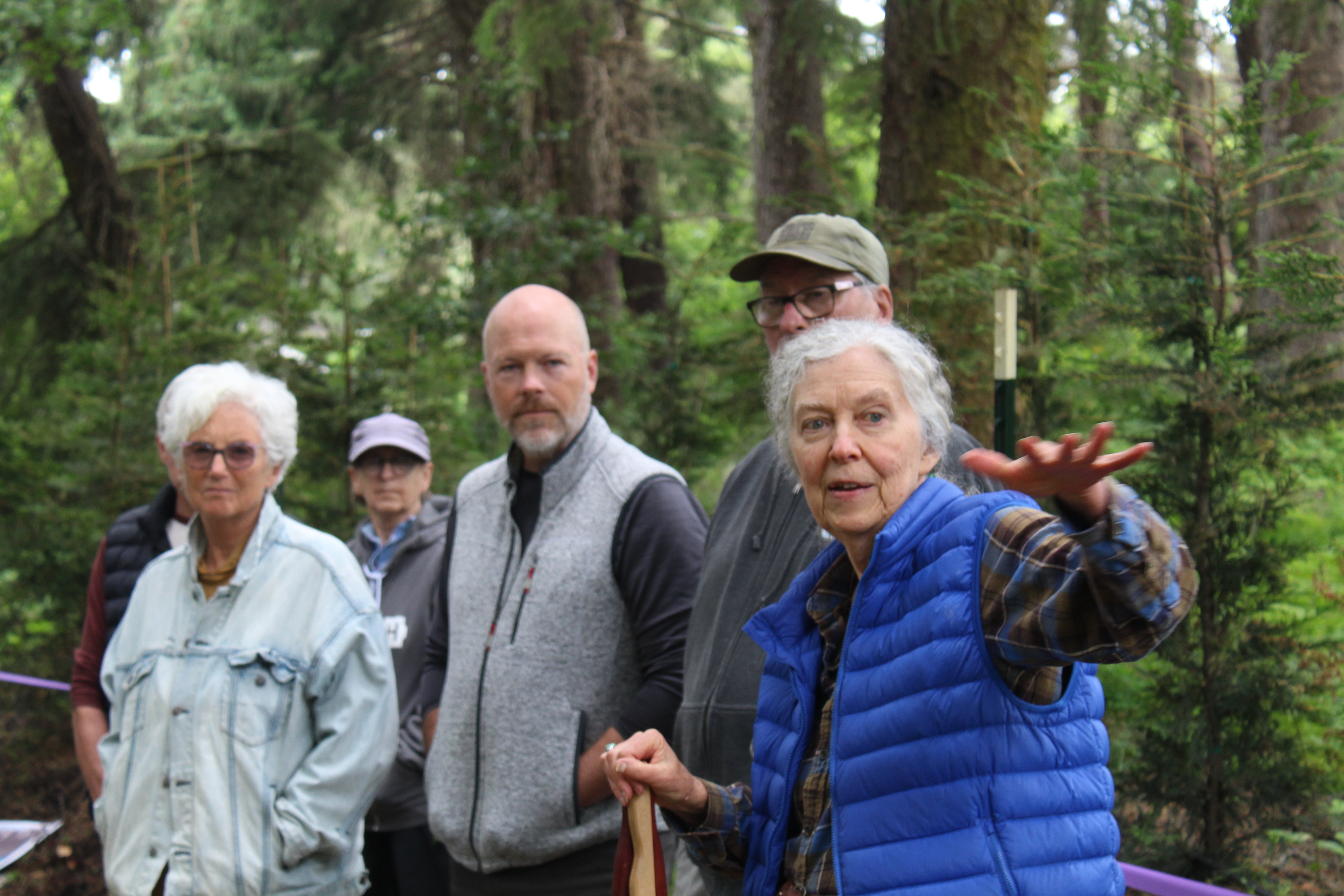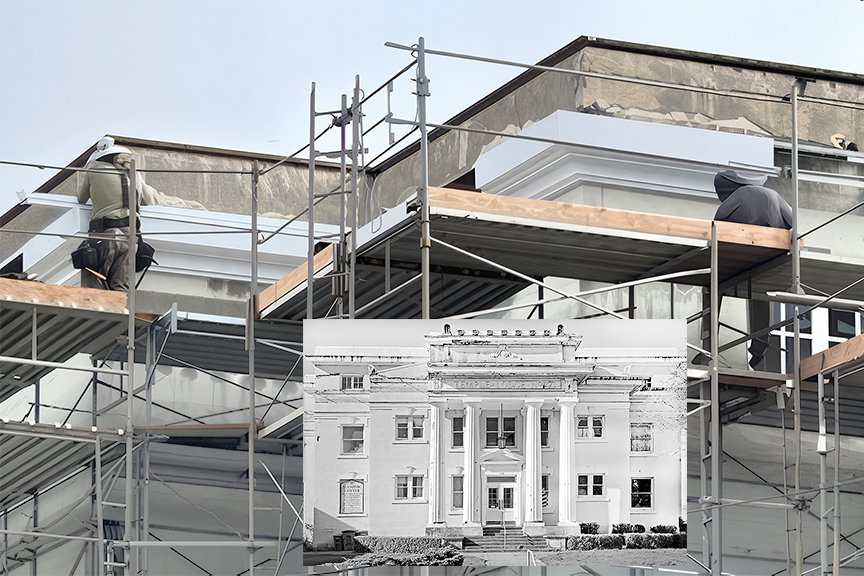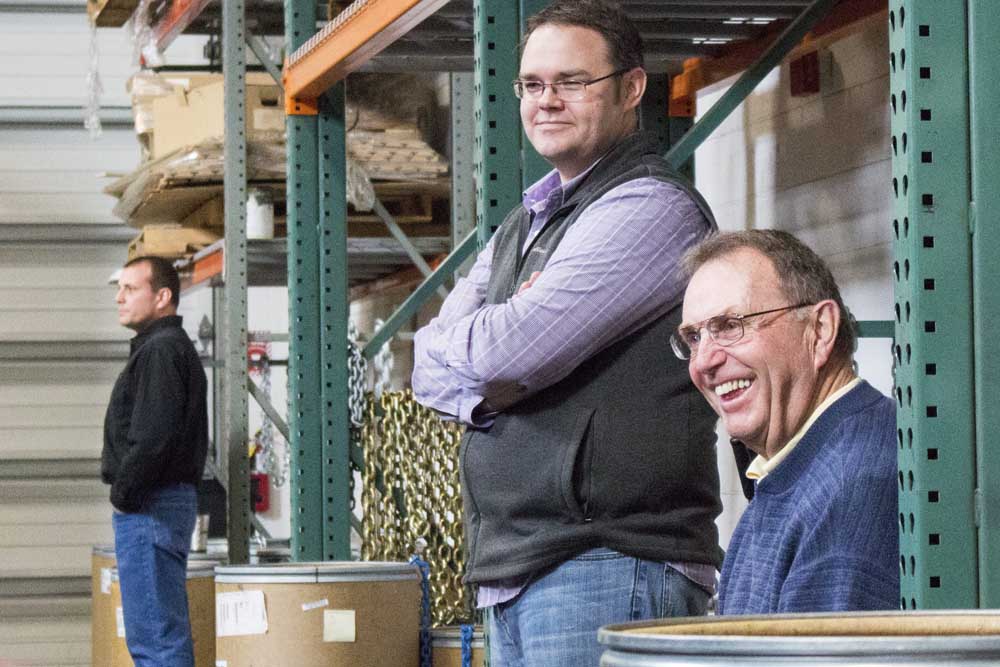Behind the News: ‘I really hope that we’re able to keep that authenticity’
Published 12:30 am Saturday, June 18, 2022

- Brett Estes is the city manager in Astoria.
Back in 2009, the Astoria City Council voted unanimously for the Riverfront Vision Plan, a framework to guide land use along the Columbia River.
Trending
The plan grew out of public fears about condominium development. But it took until 2020 for the City Council to fill in the four geographic sections, even redoing one section — Bridge Vista — to draw new height limits and other restrictions aimed at hotels.
Perceptions about development — and Astoria — had shifted with time.
“With the Riverfront Vision Plan, when that was completed, everyone celebrated and said, ‘Look, the hard work is done,’” said City Manager Brett Estes, who was the community development director at the time. “And, really, the hard work is the implementation.”
Trending
Estes, who was promoted to city manager in 2014, is stepping down in July for a job as the North Coast regional representative for the state Department of Land Conservation and Development.
In an interview, Estes discussed his experience at City Hall, the biggest policy challenges facing the city and his advice for the next city manager.
Q: Your background is in urban planning, historic preservation and landscape architecture. How has your experience in Astoria shaped your views on these subjects?
A: When I came to Astoria in 2007, I was essentially the No. 2 at the Hillsboro planning department. It was kind of thought, in Hillsboro, that ‘Brett is going to be staying here and continuing to work his way up.’
But the reason why I left Hillsboro was I was really wanting to get my hands dirty, was really wanting to get involved in all aspects of the planning process …
I look at it as, I was able to do that. I was able to jump in and get my feet wet and my hands dirty.
At first, you have to understand the culture, you have to understand the way things are done, the way to approach people. But the thing is, it’s about developing rapport with people and becoming a trusted person.
The one thing I’d say is that, regardless if you’re the community development director or the city manager, it’s trying your best to be able to develop rapport with folks. And trying your best to be able to say, you may not agree on certain aspects, but if you can be able to acknowledge that, hey, I’m here to be able to provide information, I think that’s the best thing.
That doesn’t always happen, because folks get passionate about things. But that’s the best way to be able to work within a small community.
The first project I was thrown when I came here was the Riverfront Vision Plan … That was a really enlightening project, and I think that right there really is what got me kind of hooked and engaged on Astoria, was working through that whole process.
It took longer than we thought. It took over two years. But when it went to City Council, nobody spoke in opposition to the Riverfront Vision Plan, because everyone had to give. It had to go a little bit longer to get to that point where everyone could agree, and then sometimes agree to disagree, to be able to say we’re comfortable bringing this whole thing forward.
Q: Looking back, what do you consider your most important accomplishment?
A: I’m going to say, as the community development director, the Riverfront Vision Plan was definitely that.
The fact that the federal government gave it as the Walter B. Jones Memorial Award (by the National Oceanic and Atmospheric Administration). Blair (Henningsgaard), who was a city councilor then, and I were able to go to D.C. to be able to accept that award.
Wearing my planning hat, that was a really cool thing to be able to do that.
During the economic downturn — 2008 to 2010 — we really were able to focus a lot on code enforcement. There was very little development activity happening, but working to develop the derelict building ordinance, working on the Flavel properties, ultimately being able to save the Flavel house (on 15th Street) — be a part of that — and to be able to get the downtown properties transitioned over into other ownership.
With being city manager, I’m going to say the changes within the parks department. Issues with funding … to be able to get the additional dollars brought over through the transient lodging tax, to be able to restructure the department after the parks master plan.
Pulling in my urban planning component, is saying, we need to do a parks master plan, because we need to know what is important to the citizens of Astoria, so we know what to try and focus on, so we’re not just taking stabs at things.
So developing that parks master plan really kind of laid out a path of things that we really needed to try and focus on first and foremost.
And I’m going to say, most recently, the partnership that we’re moving into with Bumble to be able to preserve the child care. Ultimately, they’re going to be able to expand it. And, ultimately, it’s going to be a cost-savings measure for the city.
But we have a stake in the game in terms of providing them with the facilities.
Q: What would you have done differently?
A: With the Riverfront Vision Plan, when that was completed, everyone celebrated and said, ‘Look, the hard work is done.’
And, really, the hard work is the implementation.
Implementation took longer than probably — ideally — I would have liked. Some of the factors are, OK, it’s expensive, it’s time-consuming, to be able to do that.
But I think that the time it took, some folks kind of forgot about maybe some of the different tenets, and there were starting to be some changes of perspective on things.
I go back to when we were developing the Riverfront Vision Plan. I remember our consultants were asking the committee members, what do you think about restrooms along the waterfront, and the committee said, ‘No, we’re not a tourist town.’
And now look — restrooms.
Just that delay, there started to be some changes in perspectives. The Riverfront Vision Plan was still a good document, because it was a base document, but the thing is I think it was maybe more difficult to be able to wrangle in all the code implementation.
We did it, though. It was just maybe a little bit of a challenge.
Q: Housing and homelessness have been significant issues over the past several years. Why do you think the city has been unable to make more progress?
A: On the housing front, it’s something that we have been working on during my tenure as city manager, and I think the issue of livability — the decision-makers, and also the citizens, struggle with how do we keep livability in place while adding more housing?
And, I think, many times there’s a fear of if we change some codes to be able to allow some additional housing, some new housing types, will that change the character of the community?
That debate has prolonged part of the implementation of doing that.
I think that when the county did the county housing study, I think that was actually a good step to be able to start looking at things more holistically. There still is a lot of work that needs to be done coming out of the county housing study. But I think it more specifically gave tasks, to be able to go and say, here’s some things to be able to do.
And that’s what we’re doing right now, is going and saying, OK, here’s some recommendations, coming from a group of professionals, work that’s been done at the county level, and doing some of the code amendments.
The code amendments in itself are not going to solve the problem.
Whenever the city starts talking about selling property — you look at Heritage Square — for some other use, it becomes controversial.
When I first came on as the interim city manager, one of the City Council’s goals was to sell city property. We had packed City Council meetings. The Heritage Square public meetings made me really think of the packed City Council meetings when the city was looking at trying to sell underutilized properties.
And ultimately the City Council backed down from that because of the citizen outcry.
I think that’s always going to be a challenge.
I was not here when Coast Guard housing was built, but the neighborhood fought it … because it was going to be new development in an existing neighborhood.
I think that also the issue of expanding the urban growth boundary, or doing an urban growth boundary swap, that’s something that we worked on when I first came on here … There’s some areas that are zoned residential, that are never going to develop as residential, and there’s some others that could be.
You look at the top of the hill around the Column, where we would be looking at doing this. I think there’s always some hesitancy about doing any development in what’s perceived as the city’s urban forest.
Q: And homelessness?
A: There’s been the homelessness solutions task force over the years, and I think that there’s been some positives that have come out of that about getting the people together to talk. That’s a positive.
However, I think that there are sometimes on the City Council some differences of opinion in terms of how to respond to the issue. But I think that I’ve seen some changes in some of the positions of our councilors over the years as the problem became more acute.
Former (Police) Chief (Geoff) Spalding and I talked about how there was so much more discussion about trying to make sure there’s compassion for people without homes. And then as some of the impacts became greater, what we had was all of a sudden a voice which we weren’t hearing as much of, which is, this is effecting our ability to conduct business.
So we didn’t have that voice fully vocalized by our community a few years ago. And we’ve really seen a change … The compassion hasn’t been thrown out the door, but at the same time it’s, how far can things tip before we are needing to be able to have some rules to be able to address the impacts?
I think that it’s the change in the community voice over the past year and a half which is now really ramping things up for us to be able to bring to City Council some of these codes.
Q: What do you consider the biggest policy challenge facing the city?
A: Is it just one?
Homelessness. That’s definitely one. Affordable housing. And in my opinion, it’s housing that’s affordable for people at all incomes.
We have the issue of people who are on very limited resources not being able to find a place. But it’s also people who are coming here for well-paying jobs who aren’t having the ability to find a place to live.
That is going to continue to impact the ability of the community to be able to attract folks.
And this now is going to tie into the third one, which is authenticity.
Astoria is different than a lot of other towns up and down the coast. I always like to differentiate to people, Astoria is not a coastal town, we’re a river town …
I really hope that we’re able to keep that authenticity of people, of all incomes, of all types of people who can work in town, and live here, can raise families here.
That we retain what has made Astoria so special over the years.
Q: Any advice for the next city manager?
A: Get out there and get to know all the different voices and all the different people in town.
Astoria is a very unique community, and its people are what really, in my opinion, contribute to that.









